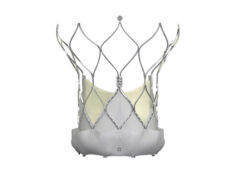
A study, published in the Journal of Interventional Cardiology, indicates that females, bleeding, and blood transfusions—among others—are associated with lower odds for an early discharge after transcatheter aortic valve implantation (TAVI). However, the transfemoral approach and prior aortic valvuloplasty were associated with increased likelihood for early discharge.
Writing in the journal, Sagar Mallikethi-Reddy (Division of Cardiology, Detroit Medical Center, Wayne State University School of Medicine, Detroit, USA) and others report that, at present, there is “a concerted push for adopting a minimalist strategy in the TAVI patient population periprocedurally” with “an emphasis on early discharge”. Noting that recent European studies have demonstrated the feasibility of early hospital discharge, the authors sought to “identify the predictors of early discharge”. They add that secondary objectives were to “compare in-hospital outcomes and healthcare resource utilisation in early versus late discharge cohorts and ascertain the relationship between costs of hospitalisation and length of stay in TAVI”.
Of 7,321 hospitalisations for TAVI, taken from the Healthcare Utilization Project’s Nationwide inpatient sample, 21% of patients were discharged ≤3 days after TAVI—meeting the definition of early discharge. “Among early discharge cohort, approximately 85% were discharged home; but among the late discharge cohort, about 40% were discharged to extended care facilities/nursing homes,” Mallikethi-Reddy et al note. They add that only 5% of patients who underwent the transapical approach were discharged early “as opposed to 25% among the transfemoral cohort”.
Multivariate analysis showed that being female (p=0.002), postoperative bleeding (p=0.004), blood transfusion (p<0.001), stroke or transient ischaemic attack (p=0.04), acute kidney injury (p=0.04), permanent pacemakers (p<0.0001), and mechanical circulatory support use (p=0.009) were all significantly associated were a lower likelihood for early discharge. The authors comment that the finding that being female was associated with a lower likelihood of early discharge was in contrast to the results of an earlier Italian study. However, they note: “A recent study on an all-female international TAVI registry reported a low incidence of early mortality and stroke, yet mean length of stay was 12 days.” According to the multivariate analysis, predictors of an early discharge were year that TAVI was performed and prior aortic valvuloplasty.
The hospital charges, as might be expected, were significantly higher among the late discharge group: US$208,752 vs. US$157,663 (p<0.001). Mallikethi-Reddy et al state: “Avoiding unnecessary procedures and routine transfer to intensive care units for post-procedural monitoring, mitigating procedural complications, universal adoption of minimalist approach unless inappropriate, conscious effort to discharge early if clinically stable can potentially curtail excessive healthcare costs involved.”
Mallikethi-Reddy told Cardiovascular News: “Females were less likely for early discharge after TAVI, which is probably because of perception that females may have worse outcomes if discharged early. We believe that TAVI experts were being overcautious especially in discharging female patients. However, it should be noted that these statistics hold true for years 2011–2012. With recent technical advancements, there has been a rapid evolution of TAVI procedure and the discharge patterns at this time are probably different than for years 2011–2012.”












